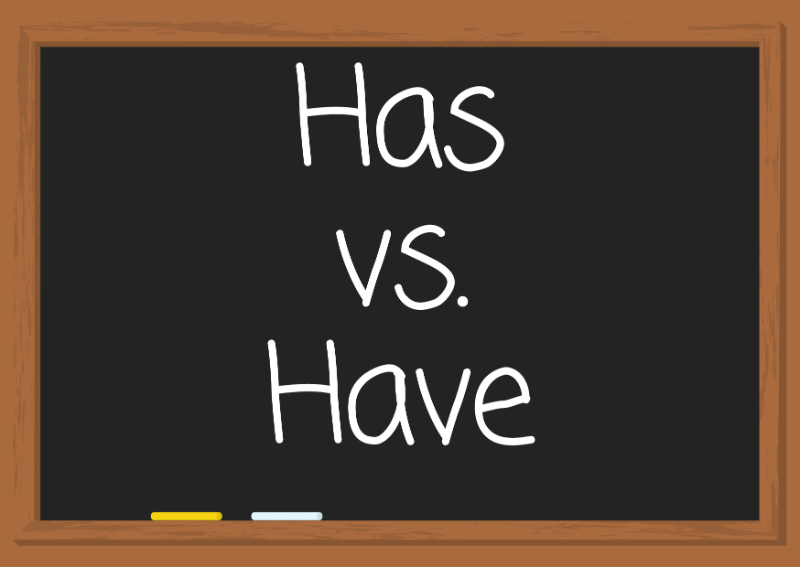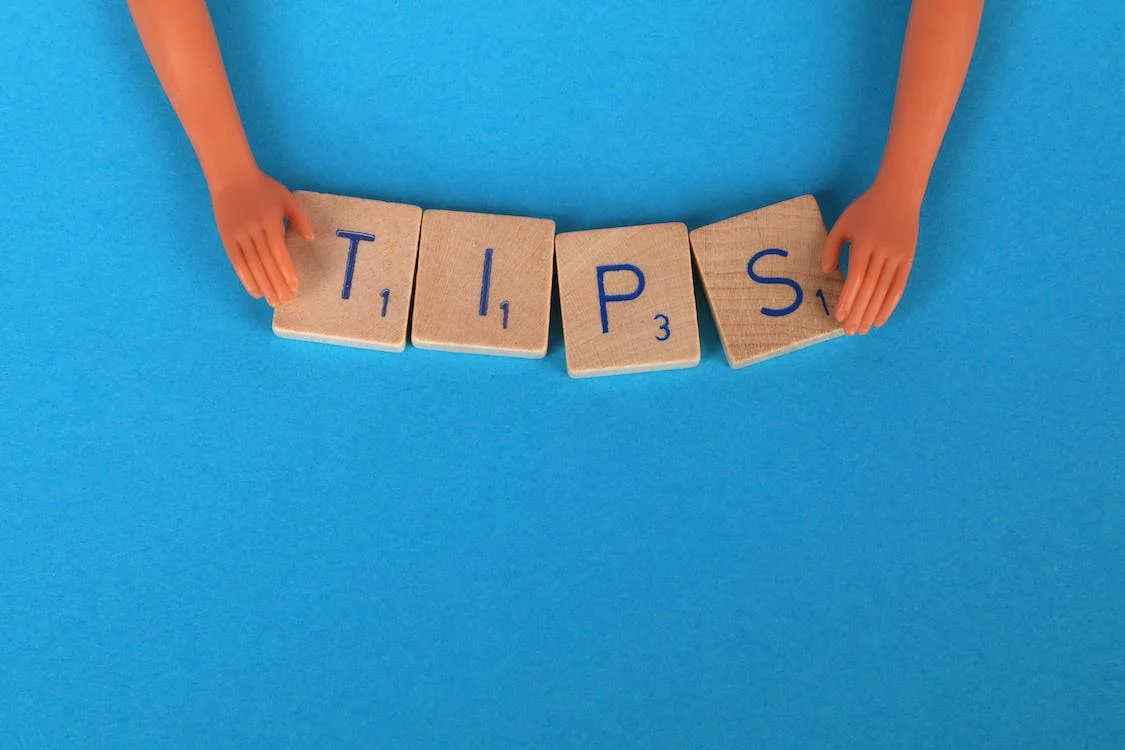Has vs. Have: Navigating Verb Agreement with Ease
Contents

Mastering Essential Verbs: Has vs Have
Will you believe us when we say that something as simple as the difference between "has" and "have" can have a significant impact on your life? It may sound exaggerated but it is true! These two common words may seem innocuous, but in both personal and professional settings, a mistake in their usage can be quickly noted, potentially tarnishing your first impression. Picture this: confidently discussing your achievements in a job interview, only to falter when choosing between "has" and "have," leaving your potential employer with a less-than-ideal impression. It's often the small details that shape our success, and mastering the distinction between these seemingly straightforward words is essential for clear and effective communication.
Perfecting the usage of "has" and "have" is essential for native-like fluency. These verbs appear so frequently in everyday conversations, emails, presentations, and other forms of written and spoken communication that confusing them won't be a smart look on you.
In this article, we will explore the meaning of "has," "have" and "had," understand the usage of "has" and "have" as auxiliary verbs in different contexts, discuss subject-verb agreement with singular and plural subjects and provide tips for their correct usage.
What is the difference between have, has, and had?
Understanding the meaning and usage of "has," "have," and "had" is essential for mastering spoken English. These three words serve as verbs and auxiliary verbs, helping to convey various tenses, moods, and aspects in different contexts. Let's dive deeper into their meanings and explore how they are used.
"Has" is used with third-person singular subjects, such as he, she, or it. It indicates possession or ownership in the present tense. For example, you can say, "She has a beautiful garden." Here, "has" demonstrates that she currently possesses a beautiful garden.
"Have" is used with first-person and second-person pronouns (I, you) as well as plural subjects (we, they). It also indicates possession or ownership in the present tense. For instance, you might say, "We have two cats." In this sentence, "have" shows that we currently possess two cats.
Now let's look at the past tense form of these verbs - "had." This word represents past possession or ownership. For example, you could say, "He had a lovely car." Here, "had" indicates that he owned a lovely car in the past.
To understand their usage better here are some examples:
Subject | Verb | Example |
I | have | I have the book you want. |
You | have | Do you have a pen? |
She | has | She has a new job. |
He | has | He has an appointment. |
They | have | They have five children. |
We | have | We have our completed assignments. |
Now that you have a better understanding of the meaning of "has" and "have", let's explore their use as auxiliary verbs and subject-verb agreement further in the next section.
Has vs Have: Difference as Auxiliary Verbs: Understanding Subject-Verb Agreement
Subject-verb agreement is a crucial rule in grammar that ensures that the subject and verb in a sentence align in number (singular or plural). This agreement is essential for maintaining clarity and coherence in communication. In essence, the correct form of a verb (singular or plural) must correspond to the number of the subject it relates to. In this section, we will look at how "has" and "have" can be used as auxiliary verbs by following subject-verb agreement.
Auxiliary verbs, also known as helping verbs, are used in conjunction with main verbs to express shades of time, aspect, or mood. As auxiliary verbs, "has" and "have" are essential in forming the present perfect and present perfect continuous tenses. In these tenses, "has" and "have" work in collaboration with the main verb to express different aspects of an action. Let us look at the rules to understand the difference between "has" and "had":
In the present perfect tense, "has" is used with singular third person subjects to indicate actions that have been recently completed or have relevance to the present.
Example: "She has danced beautifully," "He has eaten lunch."
"Have" is used with plural subjects and singular first and second person subjects in the present perfect tense to denote completed actions without specifying a particular time.
Example: "They have explored new territories," "I have studied for the exam."
In the present perfect continuous tense, "has" is paired with singular third person subjects to signify continuous actions that started in the past and are still ongoing.
Example: "She has been running for an hour," "It has been raining all day."
"Have" is used with plural subjects and singular first and second person subjects in the present perfect continuous tense to convey ongoing actions without specifying a definite endpoint.
Example: "They have been working hard," "I have been studying for hours."
In summary, the choice between "has" and "have" as auxiliary verbs in the present perfect and present perfect continuous tenses depends on the subject's person and number. Understanding subject-verb agreement with singular and plural subjects is essential for effective communication in English. By practising these concepts, you will enhance your spoken English skills and convey your ideas accurately.

Tips for Correct Usage of "Has" and "Have"
Navigating through the difference between "has" and "have" can seem challenging, but with a few practical tips, you'll be able to use these verbs with confidence. Let's explore some strategies that will help you choose between "has" and "have" correctly in your sentences.
Tips for choosing between “has” and “have”:
Remember to match the verb with the subject in terms of number. If the subject is singular, use "has," and if it's plural, use "have."
You can use the mnemonic device "S" is in "has" and "singular" to remember the rule.
Be aware of exceptions where we do not use “has” with singular subjects. For instance, when using pronouns such as I or you as singular subjects, we still use “have.” For example, “I have a job interview today,” or “You have great taste in music.”
Tips for subject-verb agreement:
Pay attention to the noun closest to the verb. Sometimes there may be multiple nouns in a sentence. Ensure that you consider the noun closest to the verb when determining whether to use “has” or “have.” For example, in the sentence “The teacher and her students have been studying all day,” we use “have” because "students" is closer to the verb.
Practice sentence formation. The more you practice constructing sentences using "has" and "have," the easier it will become to choose the correct form.
Read aloud and listen to native speakers: Reading aloud will help you internalize the correct usage of "has" and "have." Additionally, listening to native English speakers will familiarize you with their natural intonation and rhythm when using these verbs.
By following these tips, you'll be able to navigate the usage of "has" and "have" effectively, ensuring subject-verb agreement in your spoken and written English. Keep practising, seek feedback from teachers or language partners, and soon you'll master these verbs with ease.
Pronunciation of "Has" and "Have"
When it comes to the pronunciation of "has" and "have," it's important to pay attention to the subtle differences in how they are spoken. Let's dive in and explore their pronunciation together.
First, let's break down the phonetic transcription of "has" and "have."
Has | /hæz/ |
Have | /hæv/ |
However, in fast speech, "has" is often pronounced with a reduced vowel sound, making it sound like /həz/ or even /hz/. Similarly, "have" may be pronounced as /həv/ or /hv/ when spoken quickly. The reduction of the vowel sounds occurs to facilitate smoother and quicker speech patterns. These alterations are common in fluent and rapid speech across various English-speaking regions.
It's worth noting that the pronunciation of "has" and "have" does not typically vary across different regions such as the US, UK, or India. Now that you know how to pronounce these verbs correctly in sentences, you can confidently use them in your spoken English without any hesitation.
Key Takeaways
Now that we have explored the meaning and usage of "has" and "have," let's summarize the key takeaways from this article.
Firstly, "has" is used with singular subjects, especially when referring to third-person singular pronouns like he, she, or it. For example, "She has a new car," or "The dog has a bone." There are exceptions when we do not use "has" with singular subjects, such as I and you (singular).
On the other hand, "have" is used with plural subjects like we, you (plural), and they. For example, "We have plans for the weekend," or "They have three children." It's important to remember that we use "has" and "have" with singular and plural subjects respectively because of subject-verb agreement. Practise using both verbs in sentences to get familiar with their usage.
Remember that mastering verbs like "has" and "have" is just one aspect of English language learning. If you want to delve deeper into sentence formation, grammar rules, and more, Clapingo is an excellent online platform that offers personalized spoken English coaching classes. Clapingo provides comprehensive lessons tailored to help you navigate the complexities of the English language, allowing you to communicate confidently.
Let's keep practising and exploring the wonders of the English language together!
FAQs
1. Which is correct: does she have or has?
When talking about singular third-person subjects like "she," we use "has." But when used with question words like "does" the correct usage would be "does she have."
2. What does John has or have?
When referring to John in the present tense, we use "John has." For example, you would say, "John has a car."
3. Can we use will has or have?
We cannot use "has" with "will". Instead, we use "will have" for future tense. For example, "She will have dinner later."
4. Can we use has for a girl?
Yes! When referring to a singular third-person female subject like a girl or woman, we use "has." For example: The girl has a doll.
5. Does she have or has a boyfriend?
The correct phrase would be: "Does she have a boyfriend?" In questions, when the question word is in the singular form (in this case "does"), "have" is used with the subject.
Comments
Your comment has been submitted successfully!